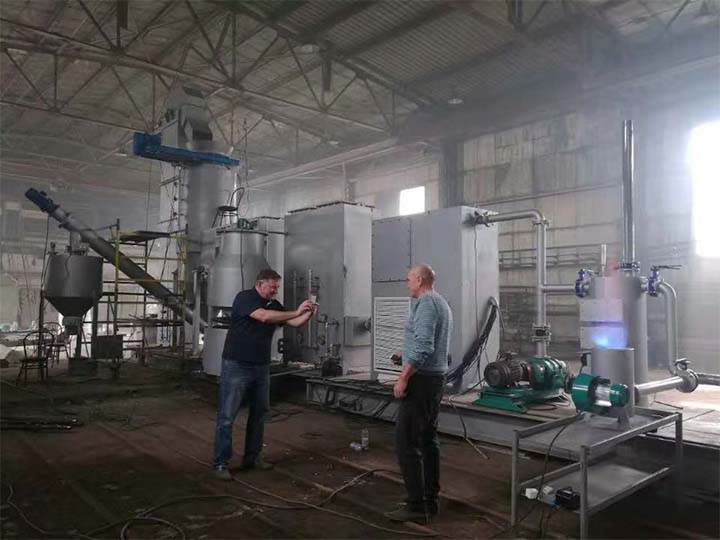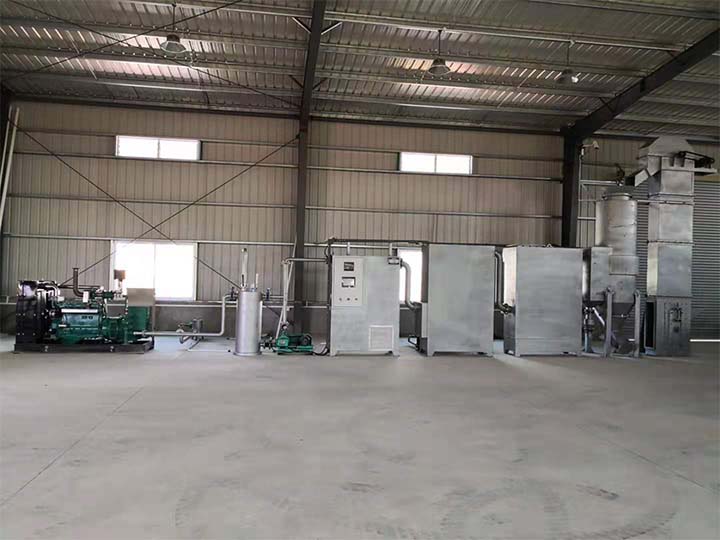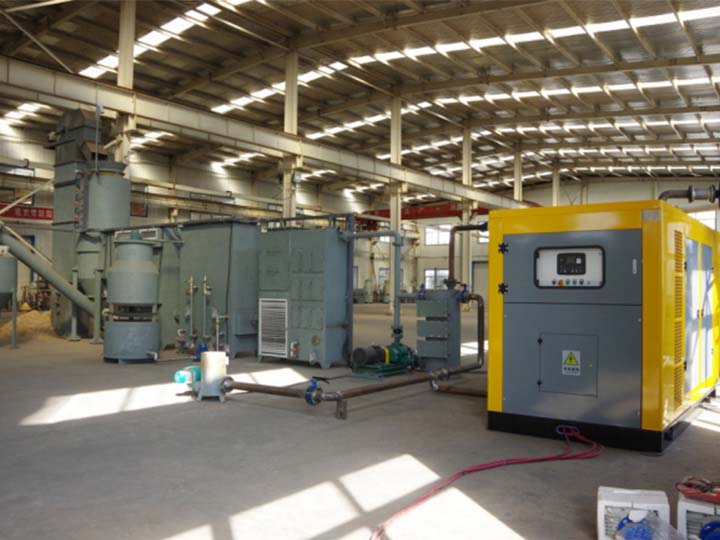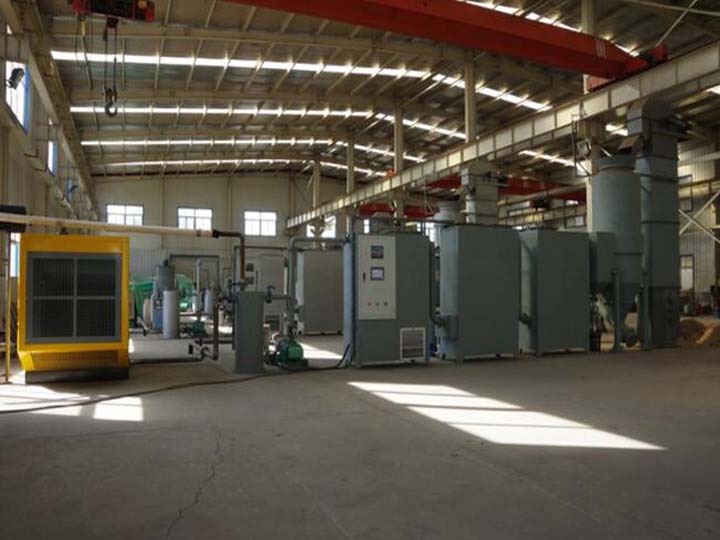A gaseificação da biomassa é o uso de fontes de energia de biomassa de baixo valor calórico, que passam por uma reação redox sob certas condições de reação, e então produzem gases inflamáveis como hidrogênio e monóxido de carbono. O gás produzido por essa reação pode ser utilizado diretamente para fornecer energia térmica ou para gerar eletricidade.
O que é energia de biomassa?
A fonte de energia da biomassa é a energia solar. A energia da biomassa é a energia acumulada por microrganismos, plantas e animais através da fotossíntese. A fonte de energia da biomassa é muito ampla. Palha de culturas, resíduos do processamento de árvores, esterco animal, resíduos domésticos urbanos, resíduos industriais, como borracha, plástico, etc., são fontes comuns de energia da biomassa.
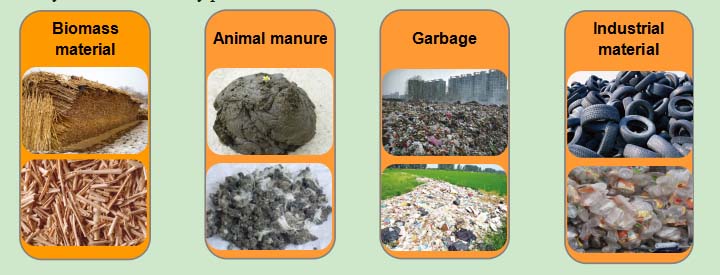
Quais são as características da energia de biomassa?
- Proteção ambiental: Primeiro de tudo, as matérias-primas são todos os tipos de resíduos, o que resolve o problema do descarte de alguns resíduos. Em segundo lugar, após a reação de oxidação-redução, o gás produzido é monóxido de carbono (CO), hidrogênio (H2), metano (CH4), poliacetileno(CmHn) e outros gases combustíveis, que não causam poluição ao meio ambiente.
- Energia Renovável: A energia de biomassa pode ser produzida novamente através da fotossíntese de plantas e animais. Ela pertence à energia renovável, assim como a energia solar, a energia hídrica, a energia eólica, etc.
- A riqueza do valor total: A energia de biomassa, como a quarta maior fonte de energia na Terra, possui uma ampla gama de fontes. De acordo com estatísticas, a energia de biomassa produzida pela Terra a cada ano é cerca de 10 vezes a energia consumida pelos seres humanos, enquanto a taxa de utilização dessa energia pelos seres humanos é inferior a 3%.
- Baixo custo de produção: O custo de reciclar resíduos de biomassa é baixo, portanto, o custo de usar energia de biomassa para gerar eletricidade é muito baixo, próximo a 0,2-0,3 RMB / Kw.H, o que equivale a 60% -70% do custo de usar carvão para gerar eletricidade.
Devido às características acima da energia da biomassa, cada vez mais países começaram a prestar atenção ao uso dessa energia. O uso da energia da biomassa para fornecer energia ou produzir eletricidade é a tendência de desenvolvimento futuro.
Introdução à Gaseificação de Biomassa
Após a combustão incompleta e a reação de oxidação-redução da energia da biomassa no gaseificador, uma série de gases combustíveis será produzida. Esse processo é chamado de gaseificação de energia da biomassa.
Processo de trabalho
Secagem → pirólise → oxidação → redução → purificação → combustão e utilização de gases combustíveis
Dispositivos relativos
Gasificador-coletor de poeira resfriado-purificador de alcatrão-separador de alcatrão-gerador de combustão interna / caldeira, etc.
Processo de gaseificação
O gasificador é dividido principalmente em cinco camadas: camada de ar, camada de secagem, camada de pirólise, camada de oxidação e camada de redução.
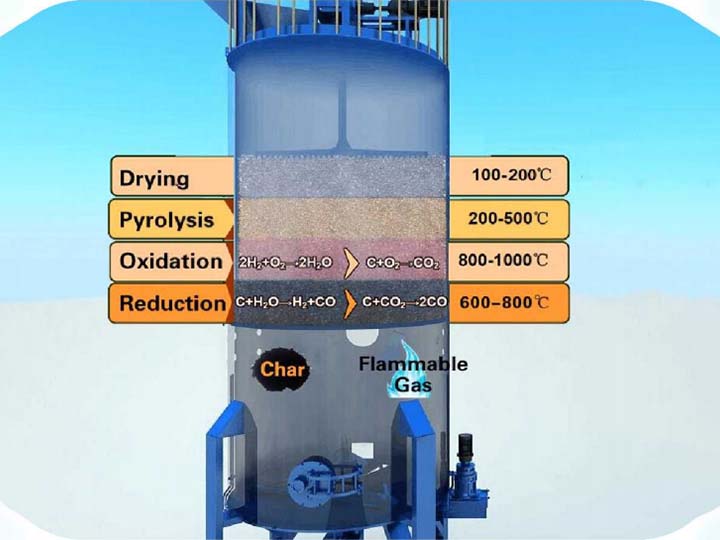
Após o material de biomassa entrar no forno de gaseificação, ele é seco e aquecido. À medida que a temperatura continua a aumentar, substâncias voláteis se precipitam em altas temperaturas e sofrem uma reação de pirólise. O gás de pirólise e o carbureto reagem para produzir vapor d'água e dióxido de carbono. Ao mesmo tempo, o calor produzido pode ser utilizado para a redução endotérmica da reação de redução e a pirólise do alcatrão para alcançar a melhor utilização do calor.
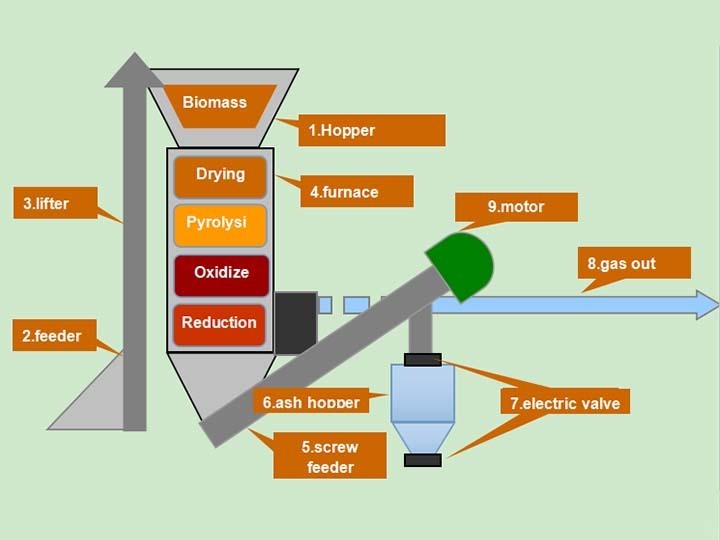
A poeira é descarregada do transportador espiral na parte inferior do gasificador, e o gás é descarregado pela porta de escape. Neste momento, o gás obtido não pode ser colocado diretamente em produção, e também precisa ser purificado e filtrado para remover poeira e alcatrão do interior do gás antes de poder ser utilizado.
Processo de purificação
- Dispositivo de remoção de impurezas: Todo o conjunto de equipamentos é equipado com 6 conjuntos de Sacron para garantir um bom efeito na remoção de impurezas.
- Dispositivo de resfriamento: O gás de síntese passa pelo ar frio, condensando a água e o alcatrão dentro dele. Nesse processo, o gás de síntese não entra em contato direto com o ar dentro da máquina, mas passa pelo duto de ar dentro da máquina.
- Filtro de alcatrão: O filtro de alcatrão consiste em quatro removedores de alcatrão imersos em água.
- Separador de alcatrão: Esta máquina inclui um dispositivo de resfriamento, que pode fazer com que a água e o alcatrão se condensem, e então usar o método de filtração a seco para descarregar o alcatrão através da filtração centrífuga.
- Filtro: O interior do filtro contém carvão ativado e tela de filtro de aço inoxidável para a filtração final de alcatrão e vapor d'água.
- Ventilador Roots: O soprador Roots é a fonte de energia de todo o processo de gaseificação e sistema de purificação. Em todo o processo de produção, o papel do soprador Roots não é apenas fazer a máquina funcionar sob pressão negativa, mas também garantir que a reação de gaseificação ocorra plenamente, sem produzir muito dióxido de carbono.
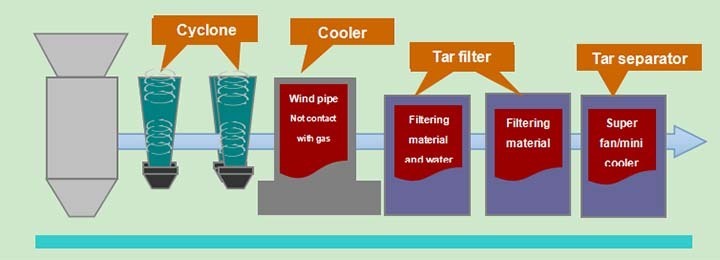
Requisitos de gasificação de biomassa para matérias-primas
- Tamanho das matérias-primas: O tamanho das partículas ou blocos de biomassa não deve exceder 30mm.
- A umidade das matérias-primas: o teor de umidade deve ser ≤20%
Vídeo: usina de geração de energia por gaseificação de biomassa de 200kw
Parâmetros da linha de gaseificação de biomassa
Parâmetro do gaseificador KX-300SA
| Saída de gás de síntese | 300m3/h | Valor calórico do gás de síntese | 1000-1200 kcal/m³ |
| Consumo de combustível | 150kg/h | Fonte de energia | 380V 50Hz/60H |
| Eficiência de gaseificação | >72% | Potência do gaseificador | 18kw |
| Motor de correspondência | 100kw | Matéria-prima | tamanho do comprimento é < 30mm, |
| requisitos | teor de umidade < 20% | ||
| Certificado | CE | Local de origem | Cidade de Zhengzhou, China |
| Tamanho da instalação | (Comprimento × largura × altura) 14m×3,5m×5,16m | ||
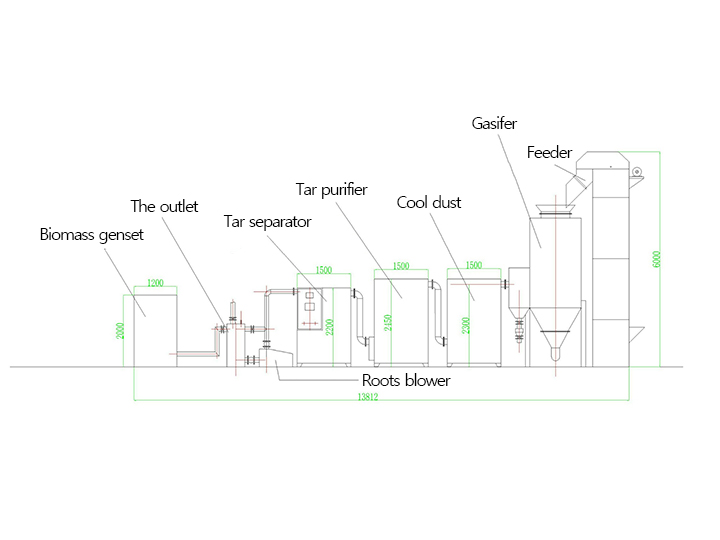
Escopo de fornecimento do gaseificador
| Nº | Nome | Peças | Número | Observações |
| 1 | Parte do corpo do forno | Corpo do forno | 1 | Reator gasificador |
| máquina de carregamento | 1 | Transporte de matéria-prima | ||
| Interface de carregamento | 1 | Correspondência | ||
| Descarregador de cinzas com parafuso | 1 | Remoção mecânica de cinzas | ||
| Tremonha de cinzas | 1 | Armazenamento temporário de cinzas de carbono | ||
| Válvula borboleta elétrica | 4 | Válvula de fechamento do removedor de cinzas | ||
| Observador de vídeo | 1 | Observação da combustão na câmara do gasificador | ||
| Placa protetora do leito | 1 | proteção de segurança | ||
| Nível de medição | 2 | Controlando o número de matérias-primas na câmara do forno e a quantidade de cinzas de carbono no recipiente de cinzas | ||
| Sensor de temperatura | 3 | Controle de alimentação e remoção de cinzas | ||
| Cone de ferro | 1 | Materiais auxiliares | ||
| 2 | Duster | Coletor de poeira Cyclone | 6 | Despoeiramento de syngas |
| Ventilador de resfriamento de ar | 1 | resfriamento | ||
| Sensor de temperatura | 1 | Temperatura de detecção | ||
| 3 | Resfriador | Resfriador | 1 | Resfriamento a gás |
| Ventilador | 1 | Resfriando | ||
| 4 | Purificador de alcatrão | Contém quatro conjuntos de removedores de alcatrão e um conjunto de gases refrigerados a água. | 1 | Remoção de alcatrão |
| Resfriador | 1 | Resfriamento por água circulante | ||
| Bomba de água circulante | 1 | Circulação de água de resfriamento | ||
| Sensor de temperatura | 1 | Temperatura de detecção | ||
| 5 | Filtro de alcatrão | Dispositivo de resfriamento de gás | 1 | Resfriamento de gás de síntese |
| Centrífuga de alcatrão | 1 | Separação de alcatrão | ||
| Filtro seco | 1 | Piche filtrado | ||
| Sensor de temperatura | 1 | Temperatura de detecção | ||
| 6 | Soprador de raízes | Soprador de raízes | 1 | Fornecendo energia para a gaseificação de biomassa |
| Transmissor de pressão | 1 | Controle do soprador de raízes | ||
| Conexão de borracha macia | 2 | Absorção de choque e redução de ruído | ||
| 7 | Válvula borboleta de politetrafluoretileno | 3 | Controle do transporte de gás sintético | |
| 8 |
Distribuidor de gás | Contém três conjuntos de filtros secos | 1 | Filtração de gás de síntese |
| Tocha | 1 | Detecção de qualidade de gás sintético | ||
| 9 | Gabinete de Controle | PLC | 1 | Sistema de Controle de Operação de Equipamentos |
| 10 | Tubo de Conexão | Soldagem | Conexão do Gasificador | |
| 11 | Parafusos e almofadas de amianto | Conectores e Vedações do Gasificador | ||
| 12 | Bolsa de Transporte | 1 | Ferramenta de Instalação de Equipamentos |
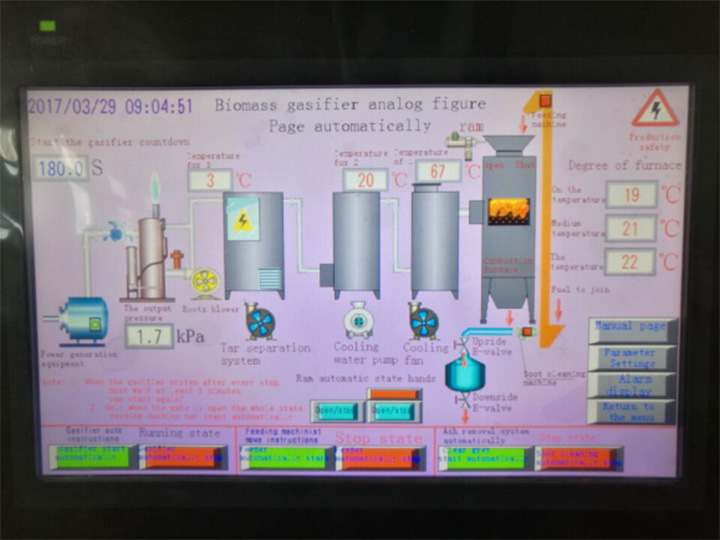
Escopo de fornecimento do gerador
| Número do modelo (Tipo de motor) | 118D12TL-2 |
| Potência Prime | 100KW |
| Velocidade Nominal (r/min) | 1500/1800 |
| Frequência Nominal | 50Hz / 60Hz |
| Tensão Nominal | 400V/230V |
| Fase | AC 3-Fases, 4 fios |
| Estabilidade de Tensão | ≤±1% |
| Transiente de tensão | ≤-10%–+20% |
| Tempo de estabilidade da tensão | ≤3s |
| Consumo de calor | ≤11mj/Kw.h |
| Consumo de lubrificante | ≤1.0g/Kw.h |
| Capacidade do motor | 151,8 L |
| Número do Cilindro | 6-V |
| Diâmetro do Cilindro | 128mm |
| Curso | 152mm |
| Sistema de partida | motor elétrico DC 24V |
| método de resfriamento | resfriador de água |
| Método de lubrificação | Lubrificante passivo e voador |
| Classe de isolamento | H |
| Proteção | IP23 |
| Alternador | Stamford Chinês |
| Fator de Potência | 0,8 defasado |
| Método de excitação | sem escova |
| Cor | sua escolha |
| Certificados | ISO 9001:2008, CE |
| Garantia | 1 ano ou 1000 horas de funcionamento, o que ocorrer primeiro |
| Tipo | Aberto |
| Sistema de controle | Sistema de alarme automático |
| Tamanho | 2850x1100x1750mm |
| Peso | 2350kg |
Caso de sucesso
Clientes da Rússia visitaram nossa fábrica e tiveram uma troca aprofundada com nossa equipe técnica.
